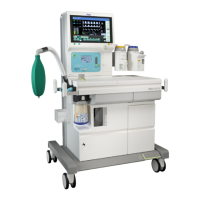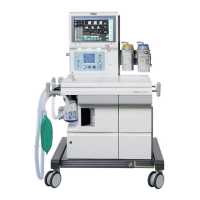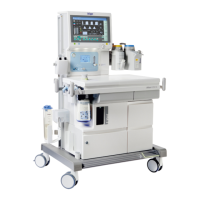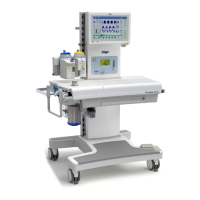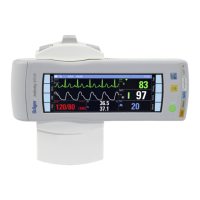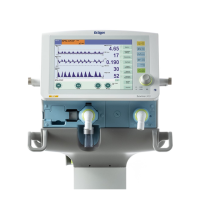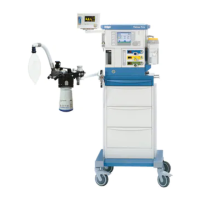Monitoring
180 Instructions for Use Apollo SW 4.5n
Part Number: 9053586, 3rd edition
Safety-relevant information
WARNING!
Risk of electric shock
If the SpO
2 sensor becomes damaged during
use, discontinue use, especially if there are
uncovered electrical contacts.
WARNING!
Risk of patient injury
Incorrectly positioned sensors may result in
incorrect measurements which may lead to
patient injury.
Only use Nellcor sensors in the recommended
positions.
CAUTION!
Risk of patient injury
The Apollo anesthesia machine has been verified to
function with Nellcor pulse oximeter probes. The
use of other probes may result in patient injury.
Use only verified probes with the Apollo.
WARNING!
Risk of patient injury
High intrathoracic pressure, pressure on the
thorax and other consecutive impairments of
the venous flow canlead to venous pulsation
and pulse signal failure.
Do not position the SpO
2 sensor where it might
be affected in this way.
WARNING!
Risk of patient injury
If the SpO
2 sensor is used in the presence of
significant concentrations of dyshemoglobins,
such as carboxyhemoglobin or methemoglobin,
measurement accuracy may be reduced.
Do not rely on measurement data if the SpO
2
sensor is used under these conditions.
WARNING!
Risk of patient injury
If the SpO
2 sensor is used in the presence of
intravascular dyes, such as methylene blue,
measurement accuracy may be inaccurate.
Do not rely on measurement data if the SpO
2
sensor is used under these conditions.
CAUTION!
Risk of misleading data
Immersing the SpO
2 sensor in liquid may lead to a
malfunction and thus misleading data.
Do not immerse the SpO
2 sensor in liquid.
CAUTION!
Risk of failure or inaccurate data
If positioned close to a bright light source, the pulse
signal may fail or the results may be inaccurate.
The sensor must be protected from exposure to
bright light (e.g. surgical lamps and direct sunlight).
CAUTION!
Risk of failure or inaccurate data
If the sensor is positioned on limbs together with an
arterial catheter, sphygmomanometer cuff or
intravascular venous infusion, the pulse signal may
fail and measurements may be inaccurate.
Do not position the SpO
2 sensor where it might be
affected in this way.
CAUTION!
Risk of failure or inaccurate data
Electrocautery can influence the measuring
accuracy.
Leads and the SpO
2 sensor should be positioned as
far away from the electrocautery and its neutral
electrode as possible.
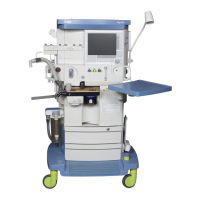
